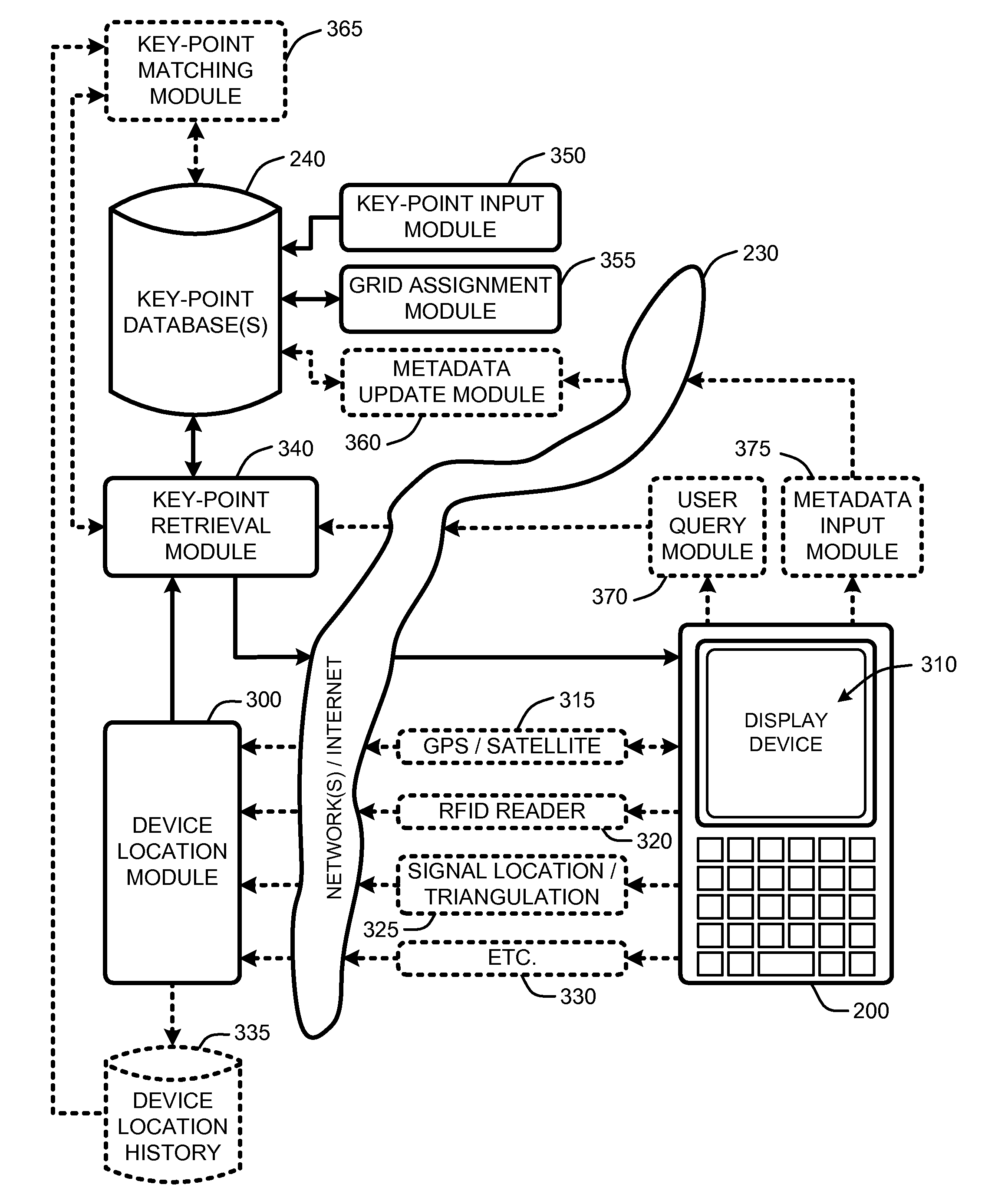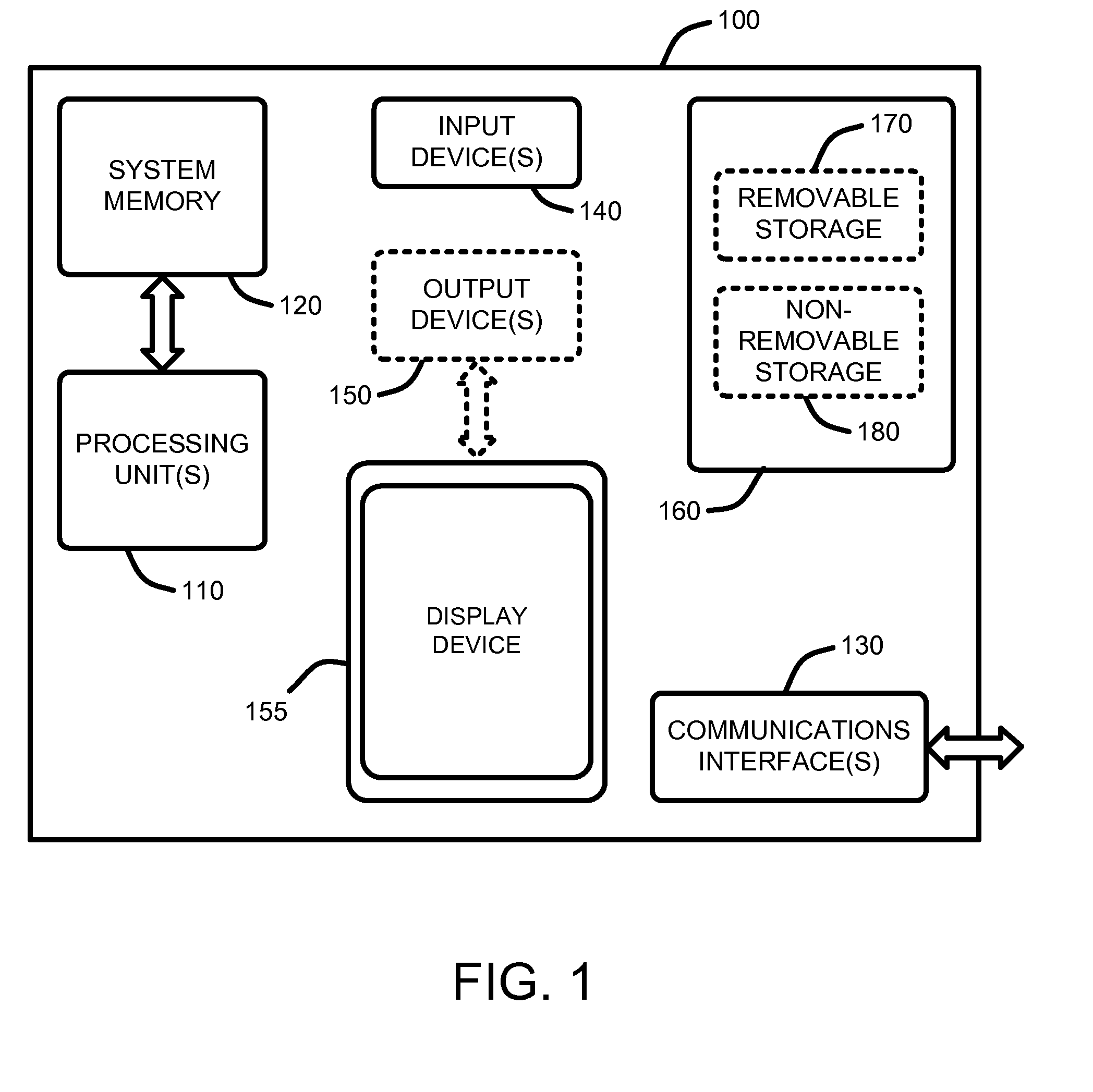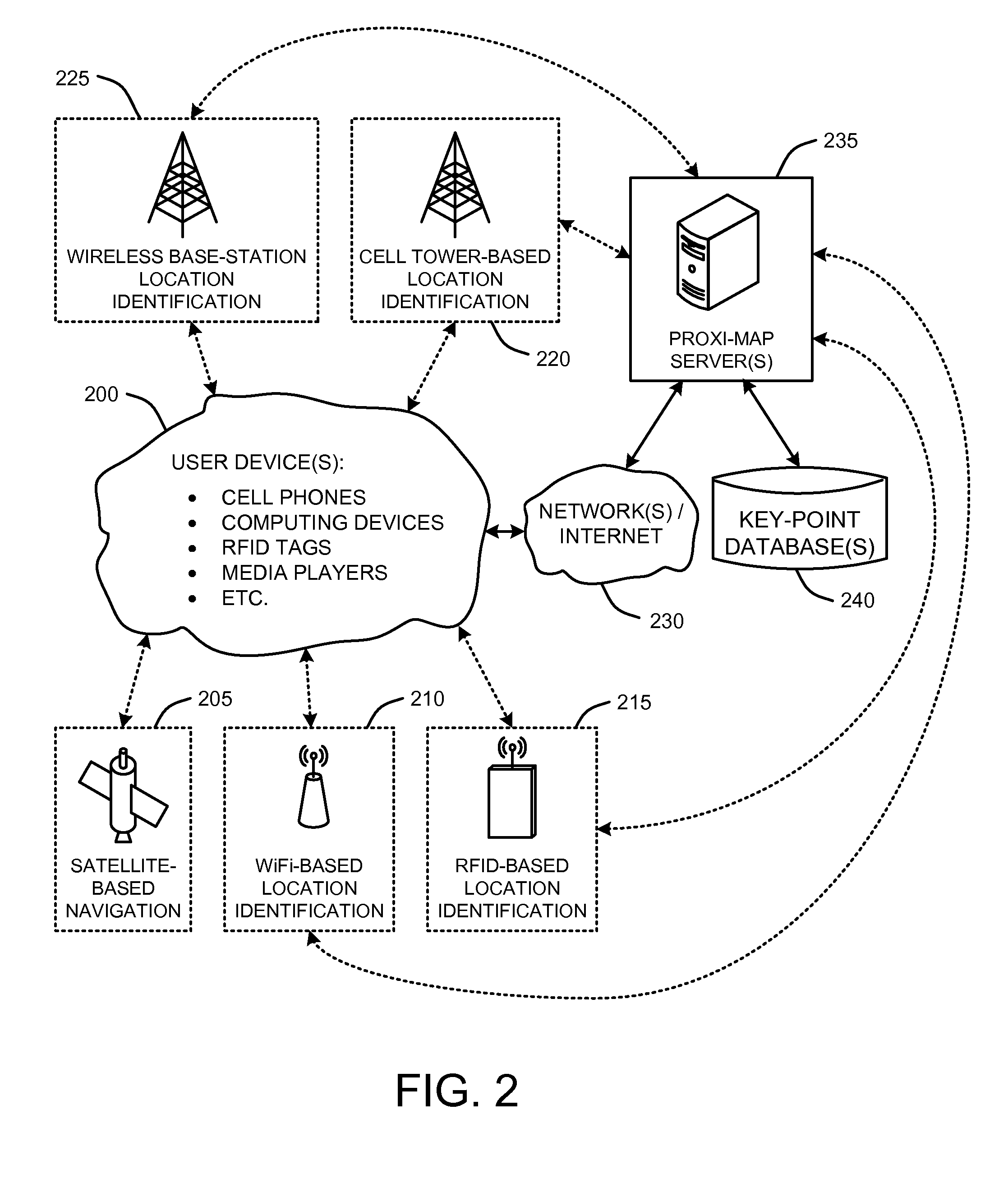Location mapping for key-point based services
a technology of location mapping and keypoint based services, applied in the direction of wireless commuication services, navigation instruments, instruments, etc., can solve the problems of relatively high cost of devices with integral location finding capability, cost and bandwidth prohibitive, etc., to maximize user experience, minimize bandwidth requirements, cost and bandwidth
- Summary
- Abstract
- Description
- Claims
- Application Information
AI Technical Summary
Benefits of technology
Problems solved by technology
Method used
Image
Examples
Embodiment Construction
[0019]In the following description of various embodiments of the present invention, reference is made to the accompanying drawings, which form a part hereof, and in which is shown by way of illustration specific embodiments in which the invention may be practiced. It is understood that other embodiments may be utilized and structural changes may be made without departing from the scope of the present invention.
[0020]1.0 Exemplary Operating Environment:
[0021]FIG. 1 illustrates an example of a simplified computing environment on which various embodiments and elements of a “Proxi-Mapper,” as described herein, may be implemented. It should be noted that any boxes that are represented by broken or dashed lines in FIG. 1 represent alternate embodiments of the simplified computing environment, as described herein, and that any or all of these alternate embodiments, as described below, may be used in combination with other alternate embodiments that are described throughout this document.
[0...
PUM
 Login to View More
Login to View More Abstract
Description
Claims
Application Information
 Login to View More
Login to View More - R&D
- Intellectual Property
- Life Sciences
- Materials
- Tech Scout
- Unparalleled Data Quality
- Higher Quality Content
- 60% Fewer Hallucinations
Browse by: Latest US Patents, China's latest patents, Technical Efficacy Thesaurus, Application Domain, Technology Topic, Popular Technical Reports.
© 2025 PatSnap. All rights reserved.Legal|Privacy policy|Modern Slavery Act Transparency Statement|Sitemap|About US| Contact US: help@patsnap.com



